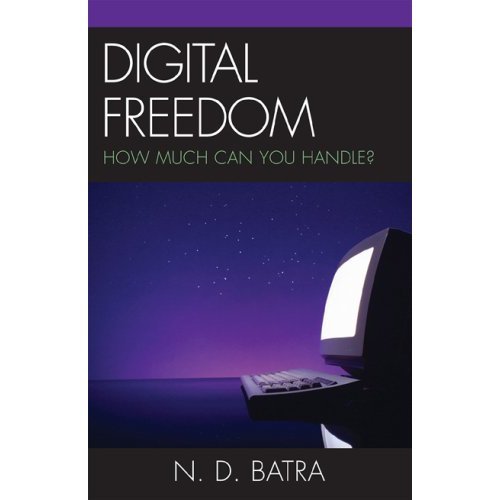How Vaishnav Hinduism influenced Tagore literature
Rajat Das Gupta (Kolkata)
rajatdasgupta@yahoo.com & dasguptarajat@hotmail.com )
My book of Tagore translation THE ECLIPSED SUN (TES) was published in January 2002 more on insistence of a few North Indian friends of mine while I went there on an Audit assignment rather than my creative urge as a literary quack while my Audit profession put me poles apart from the aesthetic world. Conscious of my shortcoming, as a rule some explanatory note preceded my translation of every piece of the poems/songs I laid my hand on to prepare the mind of my prospective readers who would generally be wider apart than me from the lofty height of Tagore’s dispensation due to linguistic barrier. Yet, my quackery was sometimes naïve and I had left out some important dimensions of Tagore literature which a real erudite certainly would not.
I realized such an omission of mine in TES while in March 2011 I happened to have in hand an article by Dr. Jaba Chatterjee in the faculty of Bengali literature at Rishi Bankimchandra College at Naihati (an hour’s journey from Calcutta). Subject of her article was influence of the Vaishnavite cult on Tagore’s literature which I totally omitted in my TES, very unpardonably. In her dissertation Dr. Chatterjee particularly mentioned the following 2 songs by Tagore which are part of my TES, to illustrate impact of Vaishnavite cult on Tagore. So, I shall try to make good my earlier lapse by restructuring my the then introductory notes related to these songs with the historical context which Dr. Chatterjee’s article reveals. The songs are as follows :
1) Tomay natun kore pabo bole
Harai kshne khan
O mor bhalabashar dhan
……………………………..
…………………………………
[Note: With our limited perceptions we lose sight of God in our daily life. However,
we do glimpse Him at times to realize that He is our dearest who had created
humans to whom He occasionally flashes the mysterious intent behind His
wonderful creation of life, but only to be left again to the mundane. Is this
hide and seek His mirth, never giving us the final answer to our eternal
quest of mystery behind our existence? Now, the problem with Tagore’s
poems and songs often is, we cannot freeze it to any particular
interpretation and because of occurrence of the lines “Endless Thou art /
So delude as null to covert”, I am tempted to invoke the scientists’ Big Bang
theory here behind Creation if of course it means that the debut of myriad
manifestation in Nature, as we see, started from explosion of a single atom
and the Universe, now in an expansion mode will start shrinking again
as it will reach the maximum possible physical inflation and then will start
its reverse course to be again reduced to an atom, maybe this process to
continue ad infinitum. My earnest request to the readers is they may please
take my interpretation of the Big Bang theory with many a pinch of salt, if
not with a lot of laughter too. However, assuming I have even marginally
grasped the Big Bang, are we not still dwelling on the mundane? Where is its
spiritual dimension? I got a lot of spiritual stuff in the said article by Dr. Jaba
Chatterje.
In her article she has mentioned the following song of Tagore and also
another close to it ( No: 2- To Unite with me / Is Thy eternal journey)both of
which are part of TES and both as an impact of Vaishnavite cult She also
gives examples of a good number of other songs of Tagore influenced by the
Vaishnavite poets (e.g. from Joydeb’s (12th Century) Geetagovina.(in Sanskrit)
& Bidyapati of 15th Century (who wrote in Maithili) and quoted them in their
respective languages in original, in vogue in those periods in Eastern India,
including Bengal.
The crux of Dr. Chatterjee’s paper is, though human enigma about
evolution of life on this earth is primordial going with an awe, the devotional
blend in it assumed Tsunami height in Bengal, history of which is nearly a
millennium old whose impact deeply influenced Tagore literature since mid
19th Century onward which may be noted in a large number of his songs/poems
of which, quite a few in my TES occur (besides the 2 nos. mentioned in this
passage), unwittingly hitherto of their Vaishnavite link, and the reader
may hopefully relate this introduction to those also. I am thankful to
Dr. Chatterjee for making available her erudite paper to me without which my
introductions would remain deficient as in my original TES.
To get anew again
I lose Thee now and then;
O my precious love, Thy flight
Is only to be back to my sight.
Thou art not to remain,
Endlessly behind the curtain;
Mine Thou art for ever –
Drown in the temporal for frolic mere.
On Thy search trembles my mind,
Passion waves my love thou to find.
Endless Thou art
So delude as null to covert;
Such is Thy pleasure
To leave me in desolation tear.
2. Amar Milan lagi tumi ascho kabe theke
Tomar surya Chandra tomay rakhbe kothay dheke
…………………………………………………….
……………………………………………………….
[Note: Since his evolution in nature Man is trying to grasp the mystery of Creation or God and that supreme hour of His perception is nearing us more we delve into
His obscurity.]
To unite with me
Is Thy eternal journey;
Thy moon, sun and star
Between us can’t be a cover.
Many an evening and morn
Convey Thy footsteps’ vibration;
Pass Thy secret messenger’s call
My heart to enthrall.
O Traveler! My heart inundates
As Thy heavenly joy there resonates.
Does there appear
The supreme hour;
My bindings are all over
With Thy fragrance the breeze does appear?
* * * * * * * * * * * * * *

